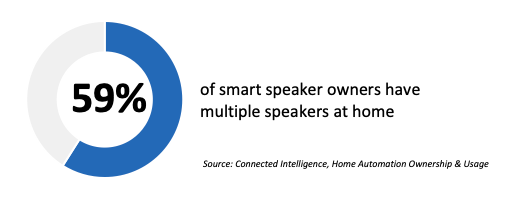
Privacy Please
Meet LeakyPick – a “spy detector” for connected devices that detects when these devices are being too smart for their own good. LeakyPick detects the presence of devices (like an Amazon speaker, for example) that stream nearby audio to the Internet. By periodically emitting sounds and monitoring subsequent network traffic, LeakyPick then monitors network traffic and provides an alert whenever the identified devices are streaming ambient sounds. LeakyPick also tests devices for wake-word false positives (i.e. words that incorrectly activate a listening speaker). So far, it has uncovered 89 non-wake words that can trigger Alexa into sending audio to Amazon. LeakyPick is currently in prototype phase.
The NPD Take:
- Privacy and data security concerns have come to the forefront as the popularity of voice assistants and the connected home increases. Between smart speakers and smart displays, and any other smart home devices that might have mics built-in, consumers are increasingly likely to have multiple listening devices scattered around their homes. Having the ability to know which devices are unexpectedly listening and recording – and warning you about it – could appease the more privacy-conscious consumers.
Google Introduces New Smart Home Features
In lieu of a conference in real life, Google recently hosted its virtual “Hey Google” Smart Home Summit, mostly centered around new developments for…developers. However, there were a few more consumer focused updates, including adding smart home controls in the long press power menu that will enable consumers to control their lights, thermostats, robot vacuums, etc., from that menu, as well as customize whether the device controls can be accessible in the lockscreen. Another announcement revealed Google Assistant’s new ability to automatically trigger Home and Away routines through presence detection. Finally, from a consumer ”ish” standpoint, developers will be able to create and suggest routines for consumers to choose from, not just for their devices, but for those that work with other devices in a customer’s home – thereby adding to (or taking the place of?) the personal routines that consumers might set up themselves.
The NPD Take:
- Believe it or not, managing smart home devices setting up routines can still be very cumbersome. By adding easily accessible controls to the power menu, Google will make it easier for consumers to quickly manage the basics of their devices. By enabling developers to design routines for consumers, Google will hopefully make it easier for consumers to take full advantage of their suite smart home devices – dependent on how successful developers are in designing routines that will actually be useful.